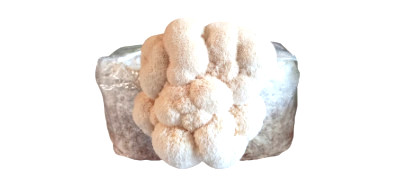Liquid Culture vs. Spores
When it comes to cultivating mushrooms, there are various methods available, each with its own unique advantages and considerations. Two popular approaches are liquid culture and spores. In this blog post, we’ll explore the key differences between these two methods, helping you understand their distinct roles in mushroom cultivation.
Spores serve as the starting point for mushroom growth. They are tiny reproductive units produced by mature mushrooms. Spores contain the genetic material necessary to develop into mycelium—the vegetative part of the fungus. Collecting spores involves capturing them from mature mushrooms and depositing them onto a sterile surface, such as an agar plate or a substrate. From there, the spores germinate and form mycelium, eventually leading to the development of fruiting bodies or mushrooms.
On the other hand, liquid culture involves creating a solution enriched with mycelium. To begin a liquid culture, a small piece of mycelium is taken from a mature mushroom or an agar plate and transferred into a nutrient-rich liquid medium. This allows the mycelium to proliferate and multiply in the liquid, creating a concentrated mycelial solution. The liquid culture can then be used to inoculate various substrates, kick-starting the growth of mushrooms.
One significant advantage of using spores is their potential for genetic diversity. Each spore carries unique genetic information, which can result in variations in growth patterns, fruiting characteristics, and even flavor profiles. Cultivating from spores offers the opportunity to explore and select desirable traits, making it a preferred method for breeding new mushroom strains or conducting research.
Liquid culture, on the other hand, allows for rapid propagation of mycelium. The concentrated mycelial solution can be easily divided and inoculated onto different substrates, enabling efficient colonization and quicker growth. Liquid culture is especially beneficial when working with delicate or slow-growing species, as it provides a boost in mycelial expansion, ensuring a higher success rate in cultivation.
It’s worth noting that using spores typically requires more patience and careful observation. Germinating spores can be a slower process compared to liquid culture, as it takes time for the spores to develop into visible mycelium. Additionally, there is a higher risk of contamination when working with spores, as they may carry unwanted microorganisms.
In contrast, liquid culture offers a more controlled and reliable approach. With a ready-to-use mycelial solution, you can bypass the germination stage and directly introduce established mycelium into your cultivation system. This reduces the risk of contamination and provides a head start for successful mushroom growth.
Ultimately, the choice between liquid culture and spores depends on your specific goals, preferences, and level of expertise. Both methods have their merits and applications within the realm of mushroom cultivation. Whether you’re seeking genetic diversity or rapid mycelial expansion, understanding the differences between these two approaches empowers you to make informed decisions and achieve successful mushroom cultivation.


